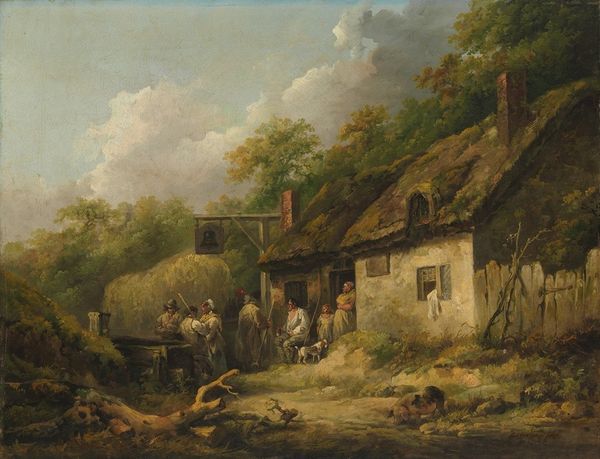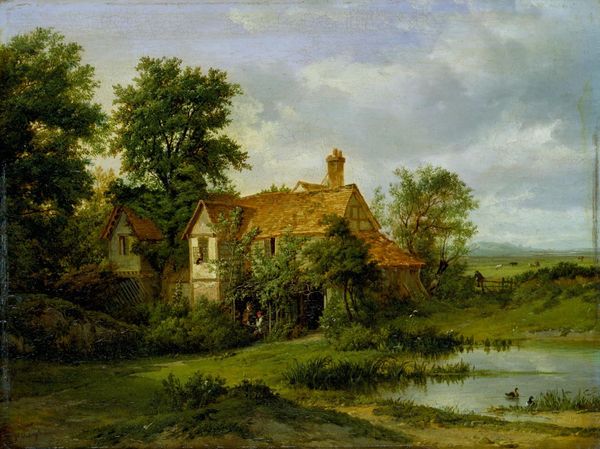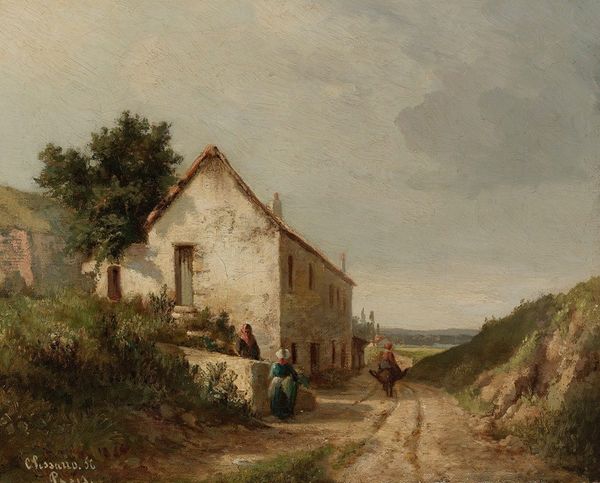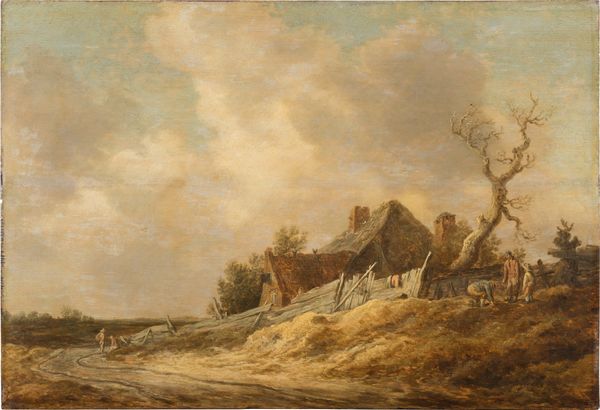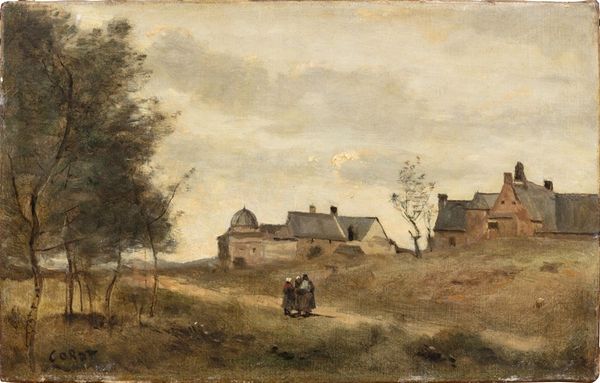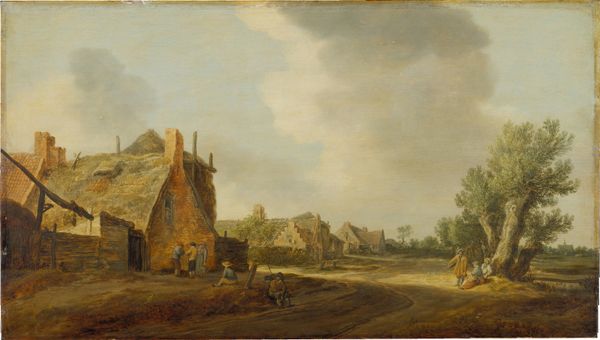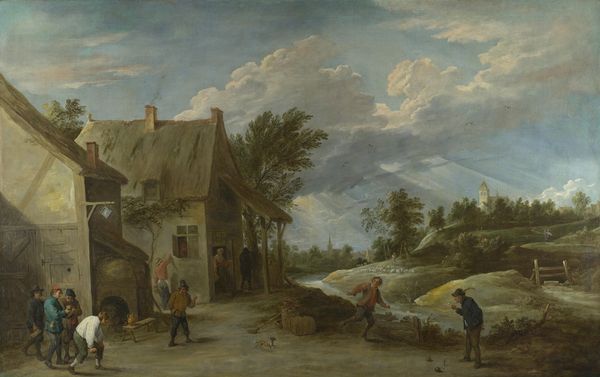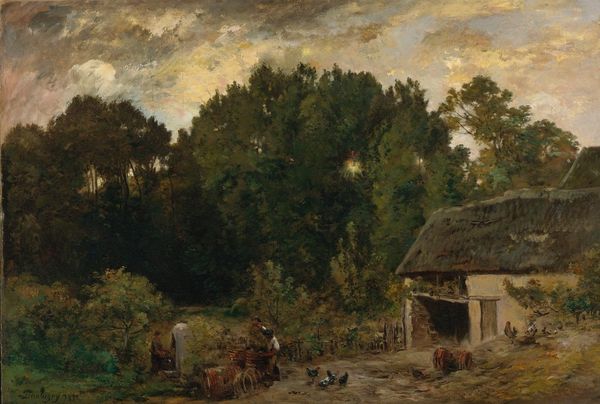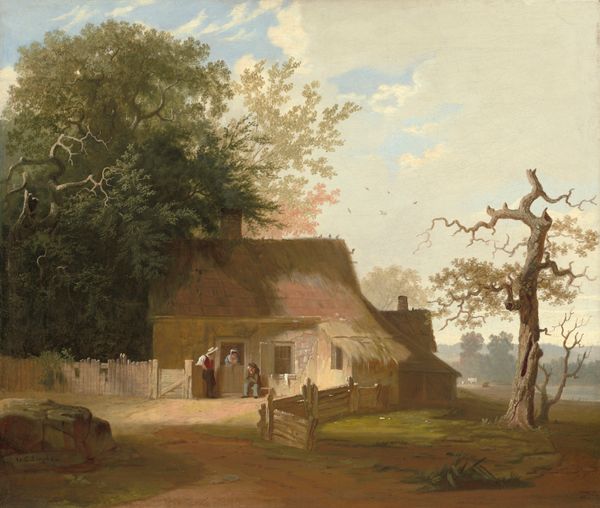
oil-paint
#
baroque
#
dutch-golden-age
#
oil-paint
#
landscape
#
oil painting
#
genre-painting
#
realism
Dimensions: height 30 cm, width 37 cm, depth 5.5 cm
Copyright: Rijks Museum: Open Domain
Editor: This is Jan Wijnants' "The Farmhouse," painted sometime between 1655 and 1684. It’s an oil painting currently at the Rijksmuseum. I’m struck by how…ordinary it seems. It’s not idealized at all. It’s just a farmhouse, some people, and some chickens. How do you interpret this work, considering the context of the Dutch Golden Age? Curator: Indeed, that apparent ordinariness is precisely what makes it interesting. Consider the booming Dutch economy at that time. Wijnants, by portraying everyday life with such detail, reflects the values of the rising merchant class. What public function could a scene like this have served? Editor: I suppose it’s validating. A celebration of their lifestyle? Curator: Exactly. It's also about ownership and display. Patrons commissioned these works. The detailed realism asserts control over their surroundings. But note, also, the carefully constructed composition. Even "realistic" scenes are designed. Does that awareness of design diminish its apparent simplicity? Editor: I see what you mean. It’s a carefully staged version of reality, reflecting their ideals. Still, to paint it… to me, it’s special because they chose *this* to represent their ideals. Curator: The 'this' matters, doesn’t it? Genre paintings like these demonstrate a shift in the patronage and the rise of burgher tastes. Editor: So, it is much more than it seems at first glance. It's an indicator of how art became intertwined with socio-economic shifts in Dutch society. Curator: Precisely. It pushes us to consider how museums and galleries themselves shape how we see these narratives.
Comments
No comments
Be the first to comment and join the conversation on the ultimate creative platform.

